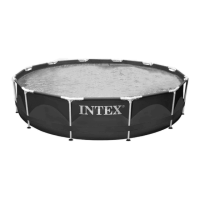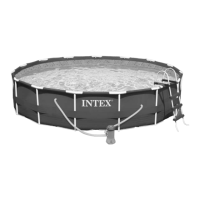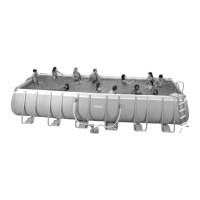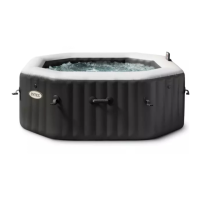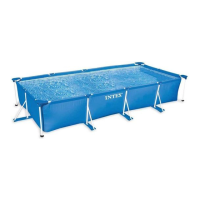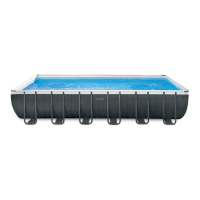Safety
12
− Keep the pool clean and tidy. The floor of the pool must always
be visible from outside.
− Check pins, bolts and screws for rust at regular intervals and
check for splinters and sharp edges to avoid injury (especially
on accessible surfaces).
Safety equipment
− Keep rescue equipment (e.g. a rescue ring) near the pool.
− Always have a functioning telephone and list of emergency
numbers near the pool.
− Ensure that the safety equipment is near the pool and the
emergency numbers near to the closest phone. Examples of
rescue equipment include: a ring buoy with rope approved by
the coastguard or a rescue pole at least 370 cm in length.
Safe use of the pool
Pool owners must familiarise themselves with local and statutory
rules and laws relating to child safety, safety barriers, lighting and
other safety measures. You can contact your municipal information
centre for more details.
− Encourage all users, particularly children, to learn to swim.
− Learn how to take emergency measures that can save lives
(e.g. resuscitation and first aid) and update your skills in these
areas at regular intervals. This can save lives in an emergency.
− Instruct all pool users, including children, in what to do in an
emergency.
− Never jump into shallow water. This can result in serious injury
or death.
− Never jump into the pool head first.
− Never jump into the pool from the ground, from portable
ladders, attachments or other high objects.
− Never throw people or animals into the pool.
− Never lie face down on floating objects. You may roll forward
accidentally and become submerged under water. There is a
risk of drowning.

